Top 5 AI Optimization Agencies Helping Brands Rank in ChatGPT & AI Search
Simran Kataria

In today’s interconnected world, designing a website that speaks only one language is no longer enough. As businesses grow beyond local markets, offering multilingual content isn’t just a luxury—it’s a strategic necessity. In fact, 72.1% of consumers spend most or all of their time on websites in their own language—and are significantly more likely to purchase when information is localized. A well-built multi-language Webflow site allows you to connect with audiences in their native tongue, build trust, and ultimately increase engagement and conversions—with both users and search engines responding positively.
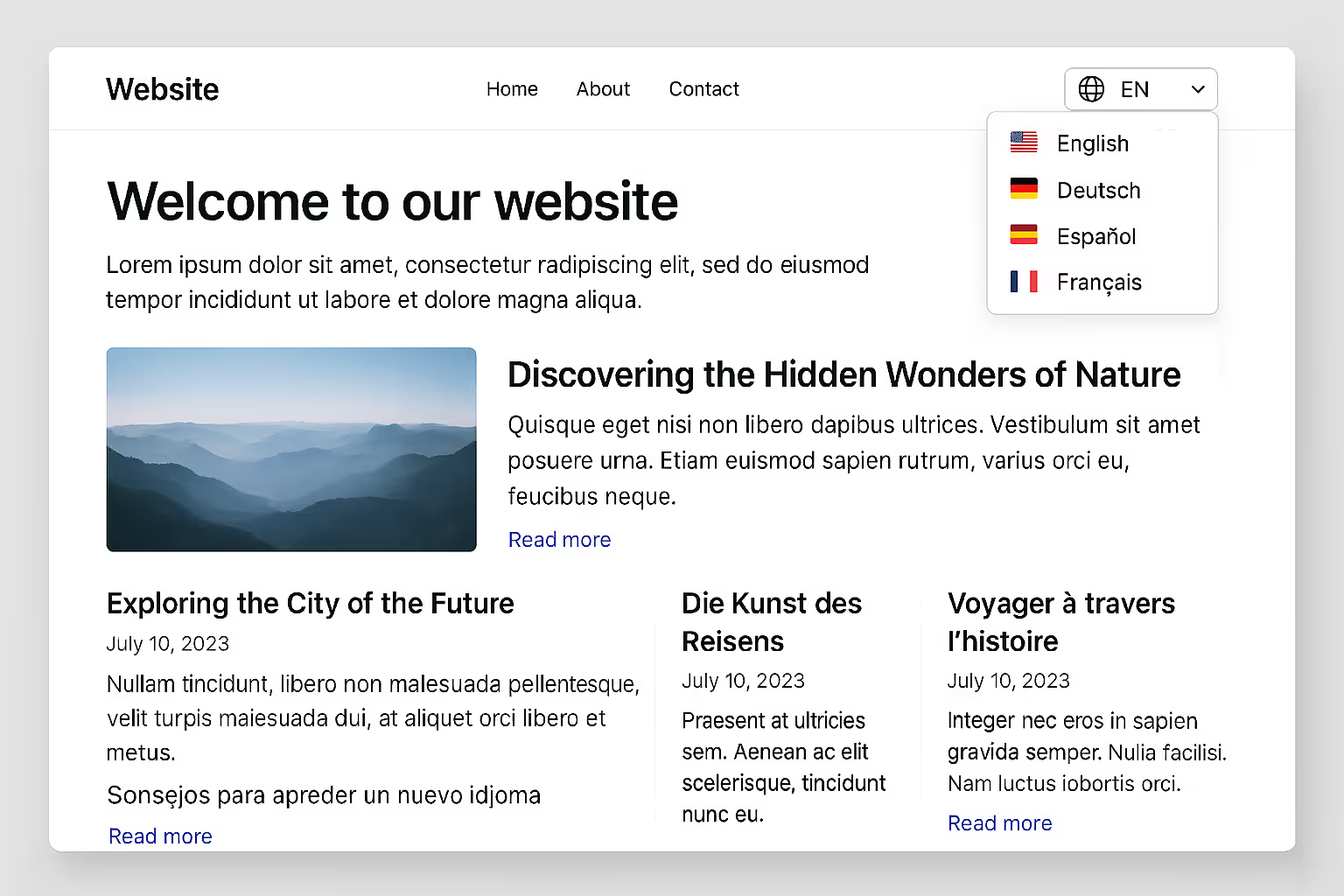
For users exploring your brand across borders, a seamless multilingual experience reflects professionalism and inclusivity. But going global isn’t just about translating words. It involves adapting your content, design, and site structure to cater to the expectations of various regions—while ensuring your SEO strategy doesn’t suffer.
That’s where Webflow localization options and translation tools like Weglot come into play. Webflow offers an intuitive platform for web design, and with the right localization strategy, it can become a powerful tool for managing multilingual sites. Whether you’re launching a new product in Europe or expanding your services across Asia, your multi-language Webflow site should deliver consistent UX and visibility in every market.
Yet, many brands make the mistake of diving into localization without a clear plan. The result? Broken layouts, duplicated content penalties, poor SEO rankings, and frustrated users who bounce due to mismatched language versions. It’s not just about making your content readable—it’s about making it relevant and discoverable in every language.
A successful multilingual site needs to balance design integrity with technical precision. From implementing hreflang tags to choosing between native Webflow localization and tools like Weglot, every decision has a direct impact on performance and visibility.
Before jumping into the tools and techniques, it’s essential to understand the strategic groundwork. This ensures you don’t just build a translated site—but a truly localized one that resonates across cultures and contributes to your long-term growth.
Let’s explore how you can approach this from the ground up, starting with planning your multilingual strategy the smart way.
Building a multi-language Webflow site isn’t just a design challenge—it’s a business decision. That’s why strategic planning should be your very first step. Before diving into tools like Weglot or setting up Webflow localization, it’s important to lay the groundwork. That means identifying your goals, understanding your audience, and building a workflow that supports scalable growth.
Identify Target Languages Based on Market Data
Start with the numbers. Use tools like Google Analytics or your CRM to determine where your current traffic is coming from. You may already be getting visitors from Spain, Japan, or Brazil without even targeting those regions. Analyze engagement metrics, bounce rates, and conversion data for these audiences. Look for markets where there’s clear demand but a language barrier might be affecting user experience.
Once you’ve pinpointed regions with potential, align your language choices with business priorities. For example, if your sales team is focusing on expanding in Europe, localizing your site into French, German, and Spanish might offer the quickest returns.
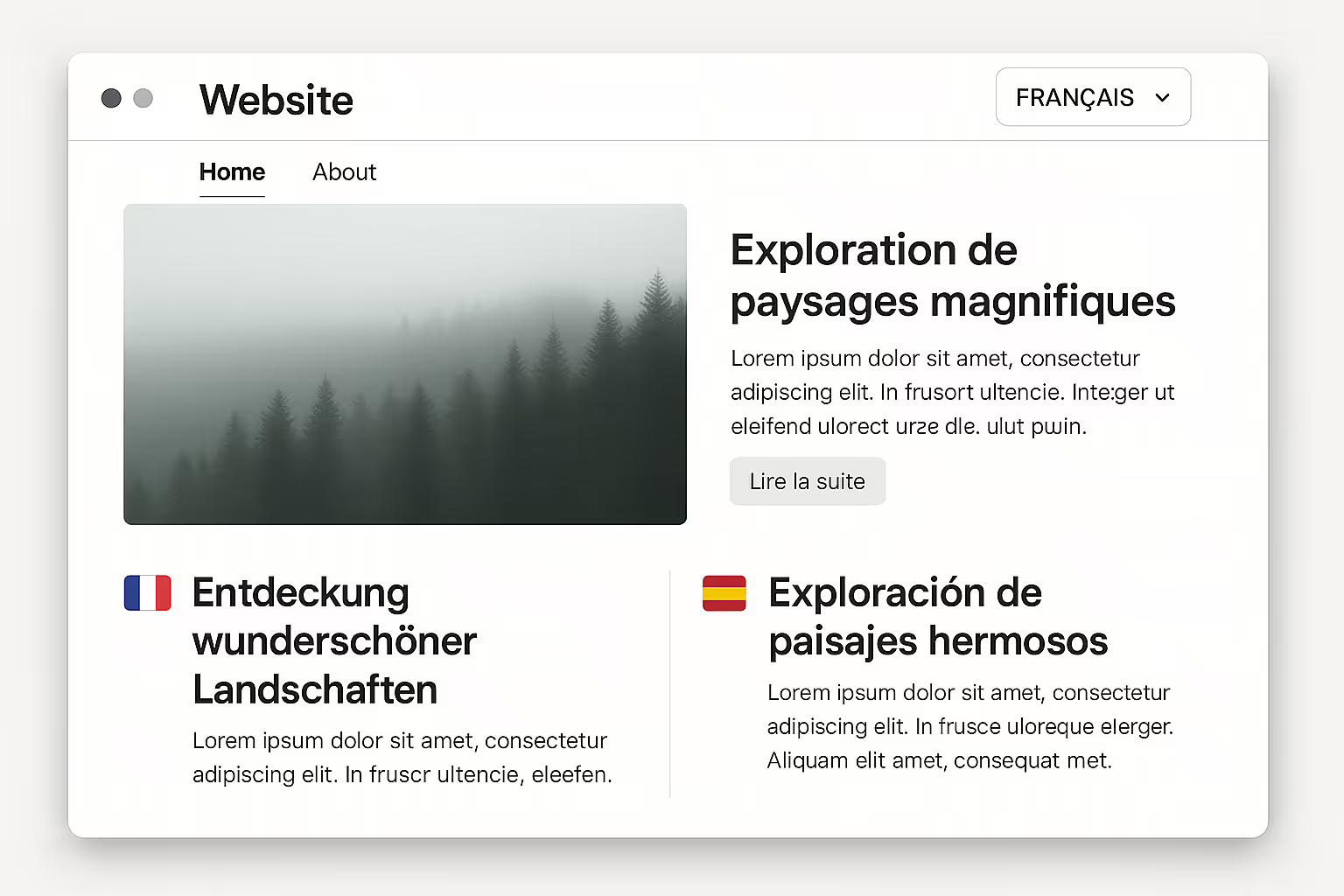
Prioritize Content That Converts
Not every page on your website needs to be translated upfront. Focus first on high-value pages—product details, landing pages, pricing, FAQs, and your contact page. These are the assets that drive conversions and build trust. You can expand translation coverage later, once you’ve established traction in a particular market.
This approach keeps the workload manageable and ensures you’re not wasting resources translating pages that don’t impact your business outcomes.
Assign Ownership for Localization Workflows
One of the most overlooked aspects of creating a multi-language Webflow site is deciding who’s responsible for maintaining it. Without clear ownership, you risk broken workflows, inconsistent messaging, or SEO issues from outdated translations.
Assign a team—or designate individuals—who will manage translation quality, update localized pages, and monitor performance. Depending on your structure, this could be someone from the content team, a regional marketing lead, or even a localization specialist. If you're using a tool like Weglot, managing translations becomes more efficient, especially when you integrate it with your team’s workflow.
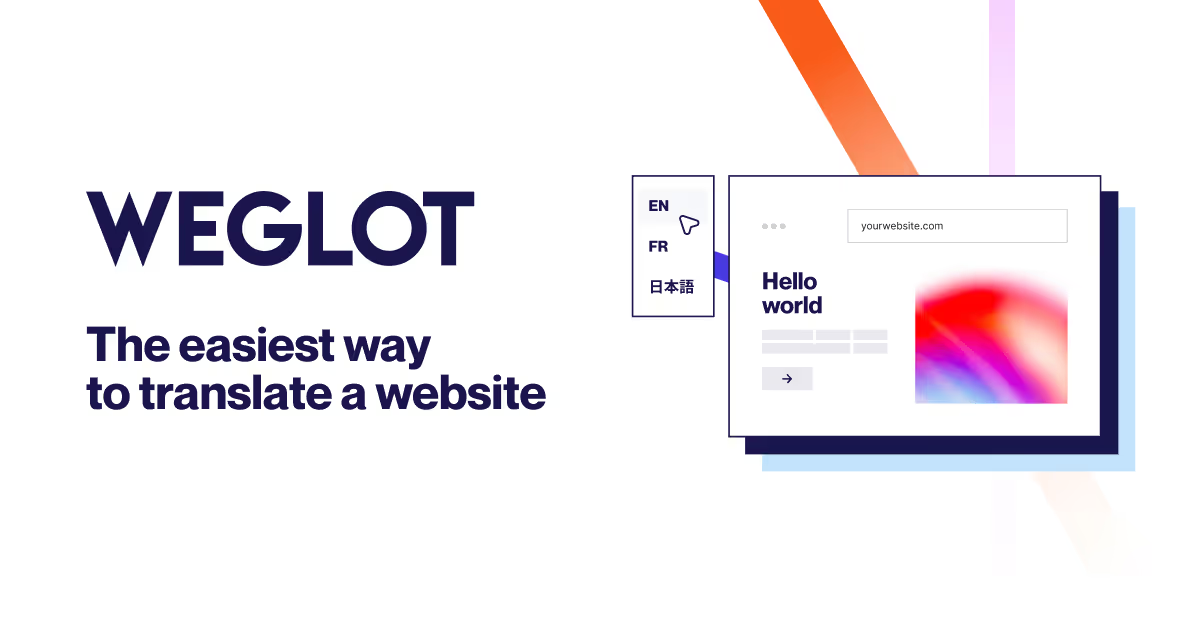
Coordinate with Marketing and Localization Goals
Your localization strategy should sync with your broader go-to-market efforts. If your product messaging or promotional campaigns differ by region, make sure your localized pages reflect that. It’s not just about translating headlines—it’s about aligning with what customers in different countries expect to see.
You’ll also want to create a system for regional stakeholders to review and provide feedback on localized content. This ensures cultural relevance and helps maintain accuracy in tone, context, and terminology.
In summary, the planning phase sets the stage for a high-performing multilingual website. When you approach it methodically—with clear priorities, resource allocation, and alignment across departments—you reduce friction and increase the chances of success.
Now that we’ve covered the strategy, it’s time to look at the practical options for implementing multilingual functionality in Webflow.
Once you’ve defined your localization goals, the next step is deciding how to technically implement your multi-language Webflow site. There are three primary approaches to consider: manual duplication with hreflang tags, Webflow’s native localization feature, and third-party solutions like Weglot. Each method has its strengths and limitations, and your choice will depend on your team’s resources, technical needs, and growth plans.
Method 1: Manual Duplication and hreflang Tags
This is the most straightforward method, but also the most labor-intensive. It involves duplicating each page on your Webflow site, translating the content manually, and assigning hreflang tags to inform search engines about the language versions.
The advantage here is full control. You decide exactly what gets translated, how it's styled, and what variations you want to introduce. It’s also cost-effective, as you don’t rely on any external service.
However, the drawbacks become clear quickly. Every update to your main site needs to be manually replicated across all language versions. This increases the risk of inconsistencies and requires a meticulous content management process. It's best suited for small sites with limited content and only one or two additional languages.

Method 2: Webflow Native Localization
Webflow has introduced its own localization system, allowing you to manage multi-language content directly within the platform. You can create separate locales, customize translations for both static and CMS content, and even adjust layout and visuals for specific regions.
It’s a solid choice for teams already embedded in the Webflow ecosystem. The native setup ensures design consistency, streamlines publishing, and allows greater flexibility in styling each localized page. Webflow also provides SEO support, including localized sitemaps and subdirectory configuration.
However, this solution has limitations. It doesn’t currently support e-commerce sites and lacks certain automation features—like glossary management and auto-updates across locales. Scaling to multiple languages can also become costly, depending on your plan tier.
Method 3: Third-Party Tools Like Weglot
Weglot offers a powerful, scalable, and user-friendly solution for managing multilingual Webflow websites. It integrates with your site via a simple code snippet and handles everything from detecting content to providing automatic translations. With Weglot, you can manage translations in a dedicated dashboard, apply human edits, and even order professional translations.
What sets Weglot apart is its full-stack localization support. It handles SEO by automatically generating hreflang tags, allows for customizable language switchers, and offers advanced features like glossary rules and automatic language redirection. It also supports both subdirectories and subdomains—helping with international SEO right out of the gate.
While it’s a paid solution, the time savings and automation it brings are significant, especially for larger sites or those with dynamic content. It’s an ideal fit for businesses that want to scale globally without micromanaging every aspect of their localization infrastructure.
Choosing the Right Fit
The best localization method depends on your specific needs. If you want complete control and have a small site, manual duplication could work. If you're already heavily invested in Webflow and need tighter design control, native localization might be the right choice. But if you value automation, SEO, and scalability, Weglot is often the most efficient and comprehensive option.
If you’re serious about SEO on your multi-language Webflow site, mastering hreflang tags is non-negotiable. These small pieces of code tell search engines which version of a page to serve to users based on their language or location. When used correctly, hreflang improves your international SEO, reduces bounce rates, and prevents duplicate content issues.
What Is hreflang and Why It Matters
Hreflang is an HTML attribute that helps search engines understand the relationship between web pages in different languages or regional variations. For instance, if you have one page in English and another in Spanish, the hreflang tag tells Google to show the Spanish page to users searching in Spanish, and the English page to English-speaking users.
This is crucial for avoiding content cannibalization. Without hreflang, Google may index the wrong version of your content, which can dilute your search rankings and confuse users. Implementing hreflang helps you serve the right content to the right audience—especially in regions where users speak the same language but expect localized content (like Spanish for Spain vs. Spanish for Mexico).
Correct Syntax and Common Mistakes
The basic format of a hreflang tag looks like this:
html
CopyEdit
<link rel="alternate" hreflang="es" href="https://example.com/es/" />
<link rel="alternate" hreflang="en" href="https://example.com/en/" />
Each page should reference itself and every other language version. This means every localized page must contain a complete set of hreflang tags.
Here are a few common mistakes to avoid:
html
CopyEdit
<link rel="alternate" hreflang="x-default" href="https://example.com/" />
Tools for Testing hreflang Implementation
After implementing hreflang tags, it's essential to validate them. Google Search Console provides some feedback, but specialized tools can help catch deeper issues. Consider using:

These tools can crawl your site and identify missing, incorrect, or conflicting hreflang signals, helping you avoid SEO penalties and improve the discoverability of your localized pages.
Whether you're manually duplicating pages or using a tool like Weglot that handles hreflang automatically, this step is vital for ensuring that your multi-language Webflow site performs well in search results.
A well-thought-out URL structure is one of the most important decisions you’ll make when building a multi-language Webflow site. It affects not only your site’s usability and brand consistency but also plays a direct role in your international SEO performance.
Subdirectories vs Subdomains vs ccTLDs
There are three main options for organizing language versions of your site:
For most businesses, subdirectories strike the best balance between simplicity, cost, and SEO effectiveness. Unless you’re targeting highly regulated or region-specific markets, ccTLDs are generally not necessary.
Best Practices for Language-Based URLs
Whichever structure you choose, consistency is key. Here are a few tips:
If you're using Weglot, the platform automatically sets up language subdirectories or subdomains based on your configuration. It also handles hreflang tags and redirections, which saves a lot of time.
Sitemap and Canonical Tag Considerations
Your sitemap should include every version of every localized page. This helps search engines find and index all your content efficiently. Most modern localization tools generate and manage multilingual sitemaps automatically, but it’s worth verifying this manually in your SEO audits.
Also, be sure your canonical tags reflect the localized versions accurately. For instance, the French version of a product page should point to its French URL—not the English one. Improper canonicalization can confuse search engines and reduce your page rankings across multiple regions.
Setting up your URL structure correctly from the start not only helps search engines understand your site’s language targeting, it also makes your content easier to manage as you grow.
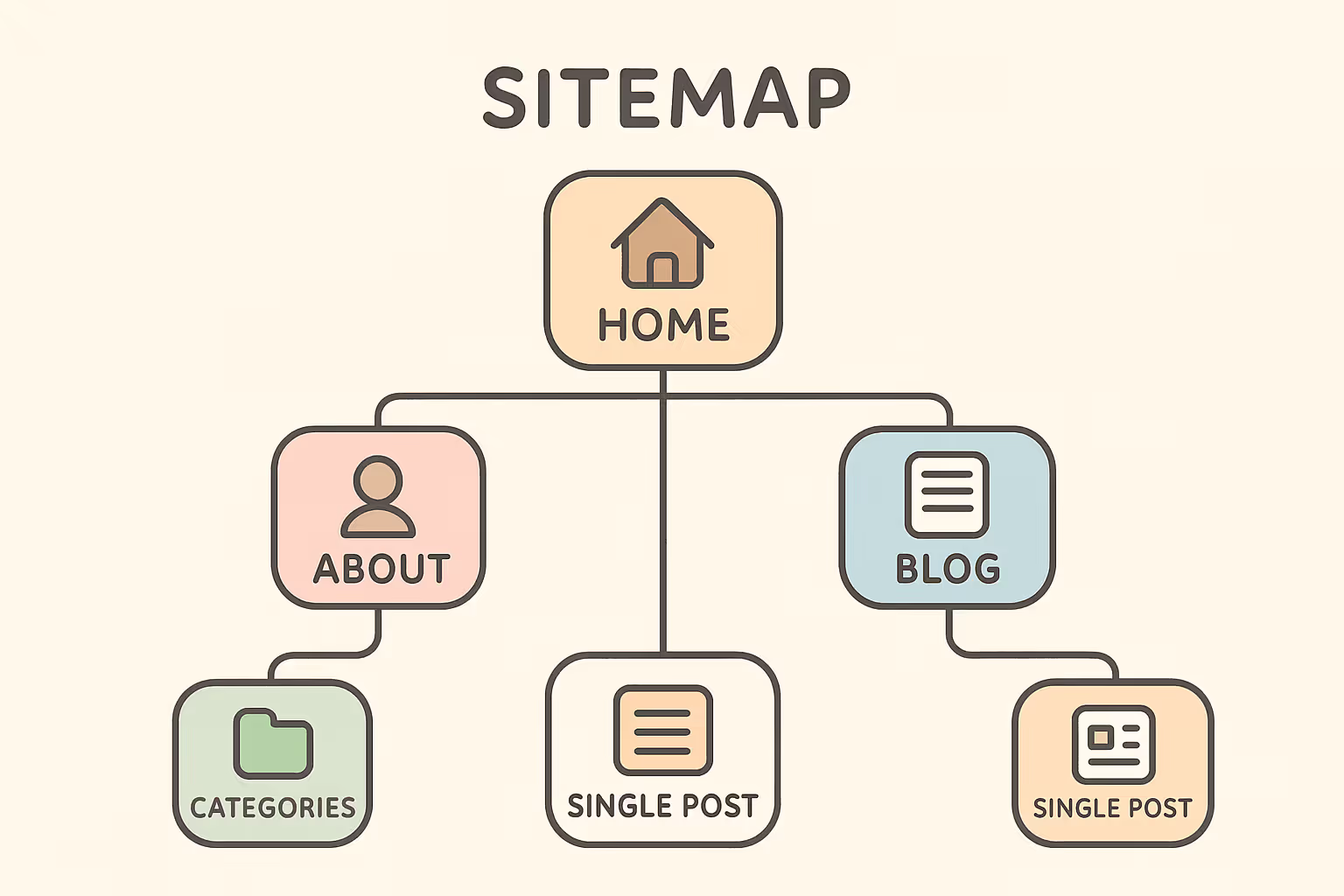
When planning your multi-language Webflow site, it's easy to assume that translating your content is enough. But if you want to truly connect with global audiences—and not just make your site readable—localization is where the real value lies.
Translation Converts, Localization Connects
Translation is the process of converting content from one language to another. It's mostly focused on preserving the literal meaning of your original content. This is useful for communicating information clearly, but it often misses the nuances that resonate emotionally or culturally with different audiences.
Localization, on the other hand, goes beyond language. It adapts every element of your site—text, visuals, user experience, and even tone—to align with the expectations and norms of a specific audience. That means changing idioms, adjusting CTAs, selecting culturally appropriate imagery, and tweaking layout to accommodate text expansion or right-to-left reading.
For example, a phrase like “Get started for free” might translate directly into another language, but it may not carry the same persuasive tone. Localization allows you to adjust that to something culturally compelling, such as “Try it with no commitment” or “Experience it risk-free,” depending on the market's preferences.
Adapting Tone, Idioms, and CTAs
Each market responds differently to messaging styles. While English-speaking markets may favor direct, assertive calls-to-action, others may respond better to more polite or indirect phrasing.
If you're working with automated tools like Weglot, you’ll get a first layer of machine translation. But it’s essential to review and refine these translations—either internally or with native-speaking professionals—to make sure your content aligns with local norms and expectations. Weglot makes this process smoother by letting you edit translations directly or collaborate with professional translators in their dashboard.
Managing Consistency with Glossaries
Another important piece of the localization puzzle is consistency—especially for brand names, product features, and industry-specific terms. A localization glossary ensures that key phrases are translated the same way across all pages and languages. This consistency strengthens your brand identity and improves user comprehension.
Glossaries are particularly valuable when working with large translation teams or when your content changes frequently. They reduce the risk of errors and keep your messaging on-brand, regardless of who’s doing the translation.
The SEO Advantage of True Localization
Search engines rank content not just based on language but also on how well it serves local intent. Localized pages that reflect regional preferences are more likely to rank for relevant keywords in that market. This means that localization directly supports your multilingual SEO strategy—not just user experience.
Simply put, translation might make your content understandable, but localization makes it relatable. And in a competitive global market, relatability builds trust and drives conversions.
Next, we’ll look at how to put localization into action by exploring how Weglot works with Webflow to build scalable multilingual websites.
Weglot is one of the most powerful tools available for building a multi-language Webflow site. It simplifies the entire process of translation, localization, and SEO optimization—allowing even non-technical teams to launch multilingual versions of their websites quickly and accurately. For businesses looking to scale globally, Weglot offers both flexibility and automation that traditional manual methods can’t match.
Step-by-Step Integration Guide
Getting started with Weglot on Webflow is remarkably straightforward. After creating a Weglot account, you’ll receive a unique JavaScript snippet. This code is added to the header section of your Webflow site—either through the Project Settings or via custom code in the Designer.
Once added, Weglot automatically detects the existing content on your website and translates it into your selected languages. Within minutes, you’ll see new language options appear on your live site, with no need to duplicate pages or update layouts manually.
Behind the scenes, Weglot creates separate URLs for each translated version using subdirectories (e.g., example.com/fr/) or subdomains (e.g., fr.example.com) depending on your configuration. These versions are indexable and include built-in hreflang tags—meaning your international SEO is handled right out of the box.
Translation Management and Editing
Weglot offers a visual translation editor that allows you to make manual adjustments on the front end of your site. This means you can see your edits in context—an essential feature for maintaining design integrity and optimizing user experience across languages.
The platform also lets you invite collaborators or professional translators to manage content within their secure dashboard. For example, your team can approve translations, edit nuanced messaging, and ensure that terminology aligns with local market expectations. It’s a scalable, user-friendly system for keeping content accurate and consistent across markets.
You can even build a glossary to control how specific words or phrases are translated. This is especially useful for brand names, product labels, or legal disclaimers that need to remain consistent across languages.
SEO Features and Customization Options
One of Weglot’s biggest strengths is its focus on multilingual SEO. It automatically applies hreflang attributes, generates a localized sitemap, and creates unique URLs for each language version. This helps search engines correctly index and rank your content for users in different regions.
You also have full control over your language switcher. Whether you prefer dropdowns, flags, or language codes, Weglot offers customizable options that can match your site’s branding. You can place the switcher anywhere on your site using drag-and-drop, widgets, shortcodes, or direct HTML placement. For example, many Webflow users place the switcher in the top navigation, footer, or as a floating element on mobile.
Weglot also supports RTL (right-to-left) languages like Arabic or Hebrew, ensuring that design layouts adapt correctly based on language direction.
Why Choose Weglot Over Native Tools
Compared to native Webflow localization, Weglot offers a more complete, plug-and-play solution that’s ideal for scaling. While Webflow's native feature is strong for custom design control, it lacks automation for translation workflows, glossary management, and advanced SEO features—all of which Weglot handles seamlessly.
Whether you’re managing a startup site or a large enterprise web presence, Weglot makes it easier to go multilingual without breaking SEO or your site’s design.
Webflow has steadily evolved from a visual website builder into a full-fledged platform for managing content and design at scale. One of its most notable recent updates is the introduction of Webflow Localization—a native solution for creating and managing multi-language sites. While it doesn’t yet offer the depth of third-party tools like Weglot, it’s a solid option for teams looking to keep everything within the Webflow ecosystem.
How to Activate Native Localization
Enabling localization in Webflow is relatively simple. From your Webflow project dashboard, go to the Settings panel and navigate to the Localization tab. Here, you can define your default language (or “locale”) and add any additional languages you want to support.
For each language, you can:
Once you’ve set up your locales, you can begin translating both static and CMS content directly within the Webflow Designer.
Use Cases and Limitations
Webflow Localization is ideal for smaller multilingual projects or teams that want maximum control over layout and content within a single interface. It’s particularly well-suited for businesses already familiar with Webflow’s design tools, as everything—text, visuals, and interactions—can be managed in one place.
However, the tool does come with a few limitations:
Comparing with Weglot for Scalability
While Webflow Localization offers granular control and a native workflow, it may fall short when your site begins to scale—especially if you’re targeting more than three languages or handling dynamic content. That’s where tools like Weglot shine. They automate many of the more time-consuming aspects of localization, including translation detection, SEO tagging, and content syncing.
Weglot also reduces operational complexity by managing translations through a centralized dashboard, which can be crucial for growing teams or enterprise use cases.
When to Choose Webflow’s Native Option
If you have a simple website with limited content and your team prefers to stay entirely within the Webflow platform, native localization is a solid starting point. It works well for landing pages, portfolios, and small business websites where performance and design control outweigh automation and scalability.
That said, as your multilingual strategy grows more complex—whether due to more languages, region-specific marketing, or technical SEO needs—you may find yourself needing the depth that only third-party tools can provide.
Creating a multi-language Webflow site isn't just a content task—it’s a design challenge too. As you add new languages, your site’s layout, functionality, and overall user experience (UX) must remain consistent. A poor visual experience in one language can quickly erode trust, even if your translations are flawless.
Maintaining Brand Consistency Across Languages
Your brand should look and feel the same across all language versions of your site. This includes fonts, colors, logos, and overall structure. Whether a user lands on the English homepage or the Japanese version, the brand experience must be seamless and recognizable.
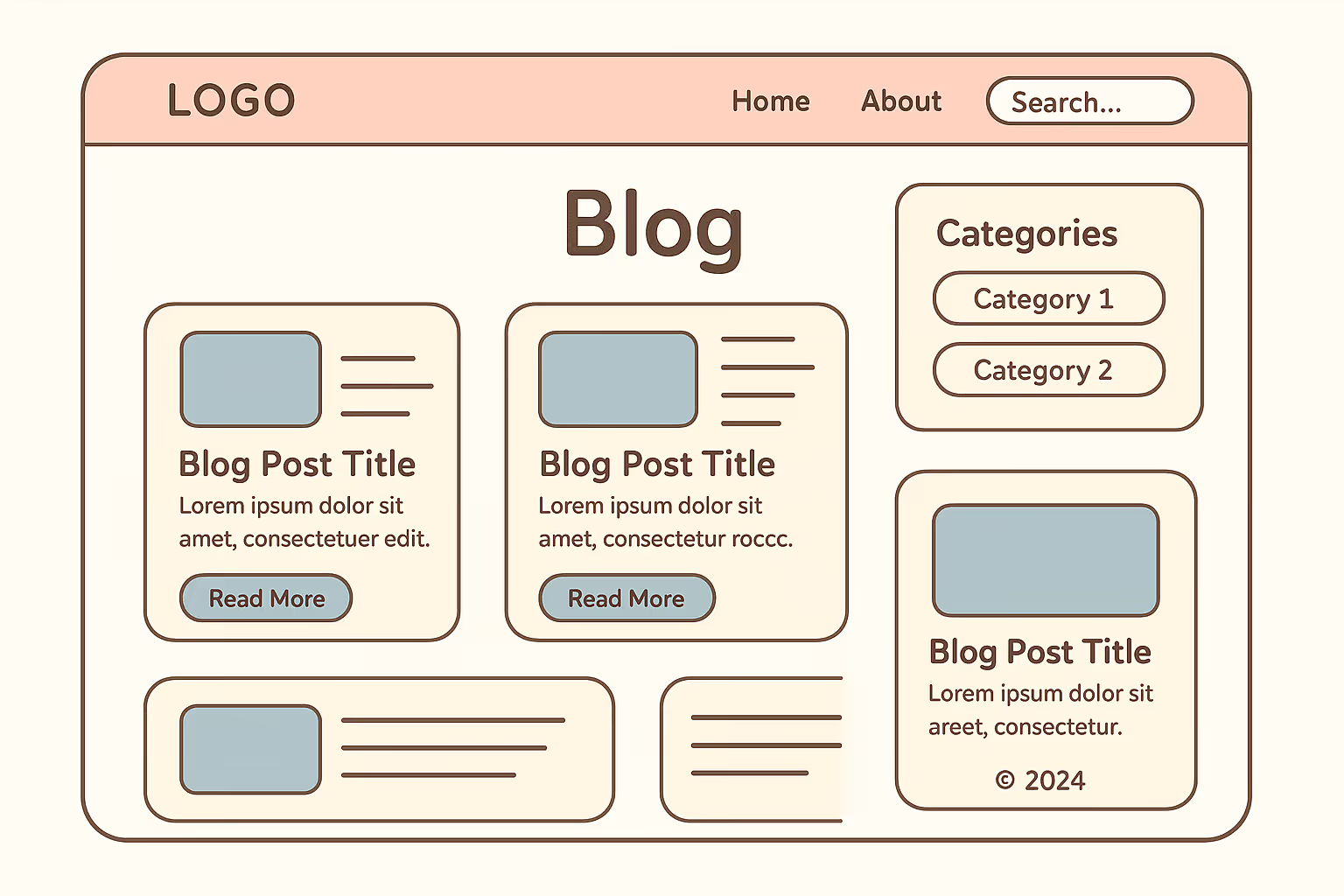
Weglot and Webflow Localization both support maintaining visual consistency by keeping the original page layout intact during the translation process. However, you may need to make small visual adjustments for certain languages. For example, longer German words may require you to tweak button widths, while Japanese may allow for more compact layouts.
Using global design templates and reusable components in Webflow can help maintain alignment across language versions, even when updates are made.
Text Expansion and Responsive Design
Languages vary significantly in word length and sentence structure. German and Finnish often take up more space than English, while Chinese or Korean may require less. This creates a common issue: text expansion.
If your design isn’t responsive to accommodate these changes, you may end up with cut-off text, broken buttons, or overlapping elements. That can damage your credibility with users and make your site appear unprofessional.
To counter this, test your layouts thoroughly after adding translations. Use Webflow’s responsive design tools to preview different screen sizes and tweak margins, padding, or font sizes where necessary. Weglot’s visual editor is particularly helpful here, allowing you to adjust translations in real time while previewing layout changes.
Localizing Fonts and Visual Hierarchy
Not all fonts support every language—especially non-Latin scripts. If your site uses a custom or stylized font, make sure it includes the characters needed for languages like Arabic, Cyrillic, or Mandarin.
Google Fonts is a good starting point for multilingual support, as many of its typefaces are optimized for a wide range of scripts and character sets. You should also be mindful of line heights and spacing, which may need adjustment for different character systems.
Beyond the typeface itself, maintain visual hierarchy by using consistent heading styles, button placements, and iconography. This helps users navigate your site intuitively, regardless of the language.
Responsive Layout for RTL Languages
Designing for right-to-left (RTL) languages like Arabic or Hebrew introduces another layer of complexity. It’s not just about flipping text alignment—entire layouts may need to be mirrored. Navigation bars, side panels, and even icon orientation should follow a natural RTL flow.
Weglot supports RTL languages out of the box and allows you to apply CSS overrides to customize the layout per language. If you’re using Webflow Localization, you’ll need to manually adjust design components using conditional visibility and custom styles.
In summary, a multi-language Webflow site must do more than just deliver readable content—it must provide a consistent, accessible, and culturally sensitive experience across all languages. Proper planning, responsive design practices, and robust testing are essential to achieving this.
Creating a multilingual site isn’t just about language—it’s about culture. Every visual choice you make on your multi-language Webflow site has the potential to either resonate or alienate. From the colors and icons you use to the imagery you display, cultural awareness in UI/UX design plays a critical role in how users perceive and interact with your brand.
Color Symbolism in Global Contexts
Color is one of the most powerful elements in design, but its meaning varies widely across cultures. For example, red may symbolize love and excitement in Western countries, but in parts of Africa, it can be associated with mourning or danger. Meanwhile, white, which signifies purity in many cultures, can represent death in others, such as in some Asian traditions.
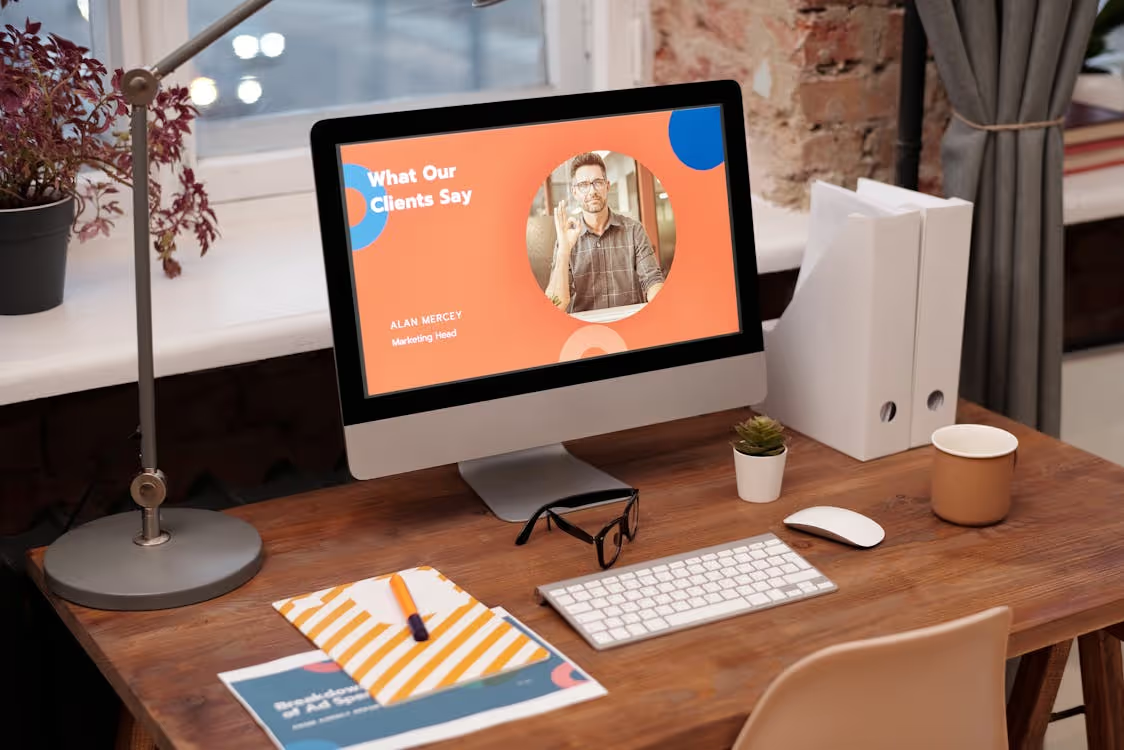
When designing a multilingual Webflow site, research the cultural significance of your color palette. Blue is often considered the most universally accepted color, symbolizing trust and calmness, which makes it a safe option for global design.
If you’re using Weglot to manage language-specific pages, you can customize visuals and styles based on locale. This flexibility allows you to present culturally aligned color schemes without affecting your primary design framework.
Culturally Appropriate Imagery and Icons
Just like colors, images carry cultural weight. A stock photo that feels normal in the U.S. might feel out of place—or even offensive—in other markets. For instance, depictions of same-gender couples, gender roles, or religious symbols must be handled with sensitivity depending on the region.
Even something as seemingly neutral as a globe icon can vary in meaning. Displaying a globe centered on North America might not resonate with users in Africa or Asia. Instead, use region-neutral symbols, or tailor icons and graphics based on geography.
Clarins, a global beauty brand, is a prime example. Their homepage features different models based on the user’s location—French audiences see a European model, while Japanese users are presented with imagery more reflective of their own culture. This approach ensures users feel seen and valued, no matter where they’re browsing from.
Avoiding Embedded Text in Graphics
A common mistake in multilingual design is embedding text directly into images. These cannot be translated dynamically, which forces you to create separate assets for each language. This not only increases your workload but also disrupts consistency across versions.
Instead, keep text in HTML or overlay it using Webflow’s Designer. Tools like Weglot automatically detect and translate visible content, allowing for smoother updates and consistent branding.
Handling Right-to-Left Layouts
Designing for RTL languages involves more than flipping text alignment. The entire interface—including navigation bars, sliders, and visual flows—must feel natural for RTL users. That may involve repositioning menus from right to left, reversing animations, and mirroring icons to match reading flow.
Webflow allows for layout customization using conditional visibility and custom CSS, while Weglot offers RTL support with language-specific styling. This makes it easier to maintain a functional and intuitive design, regardless of the reading direction.
The goal isn’t to create different experiences, but to create one experience that feels native in every language. That means being intentional with design elements and testing your UI across cultures.
No matter how well you’ve localized your multi-language Webflow site, none of it matters if users can’t find the language switcher. It’s one of the most essential—yet often overlooked—features in multilingual web design. When implemented well, it makes navigation effortless. When neglected, it frustrates users and increases bounce rates.
Placement and Visibility Best Practices
Your language switcher should be immediately visible and accessible from any page. The most common placements are in the top-right corner of the header or in the website footer. Both are acceptable, but visibility is key—burying the switcher in a menu or hiding it behind an icon can confuse users.
Sticky headers, floating buttons, or mobile-optimized placements are also worth considering for responsive sites. The goal is to ensure that the user doesn’t need to hunt for their preferred language.
Weglot makes this easier by automatically inserting a default language switcher into your Webflow site. You can reposition it using drag-and-drop options or with Webflow’s custom code. You also have the freedom to customize its design to match your site’s branding.
Flags vs Language Names
Should you use flags to indicate languages? It depends. While flags are visually striking, they often cause more confusion than clarity. That’s because flags represent countries, not languages.
Consider this:
Instead, it’s better to list the language by its native name (e.g., “Deutsch” instead of “German”). This ensures clarity for the user and avoids cultural missteps. Weglot supports both options, allowing you to use text, flags, or a combination based on your audience’s needs.
UX Tips from Industry Examples
Many companies have mastered the art of intuitive language switching. Take Uber, for example: its language selector sits unobtrusively in the footer. When clicked, it reveals a modal where users can choose their preferred language—without being forced to change region or domain.
Napta, another Weglot user, places its switcher in the top navigation using language codes (e.g., “EN”, “FR”) for a minimalist approach. This allows for quick switching without overwhelming the design.
On the more custom end, i-Mesh uses partial words from each language in a stylized switcher embedded in their sidebar. It’s a subtle but effective way to integrate localization with design aesthetics.
Additional Considerations for Accessibility
Make sure your switcher is keyboard navigable and screen reader-friendly. This is especially important for compliance with accessibility standards like WCAG. Simple touches—like focus indicators and ARIA labels—can make your switcher more inclusive for all users.
In summary, a well-placed and clearly labeled language switcher is not just a UX feature—it’s a business-critical component. It allows visitors to quickly find content in their native language and feel welcome from the first click.
When expanding a website into multiple languages, design and translation often take center stage. But speed and accessibility are just as vital to delivering a reliable and inclusive experience. A slow-loading or inaccessible site can quickly erode the benefits of a localized strategy. Whether you’re using Webflow Localization or a third-party tool like Weglot, performance and accessibility should be non-negotiable components of your multi-language Webflow site.
Impact on Load Time and How to Optimize
Adding multiple languages means more content, more assets, and more complexity. That can slow down your site if not managed carefully. Fortunately, both Webflow and Weglot are built with performance in mind.
Weglot, for instance, loads translations asynchronously. This means the primary site content appears immediately, and translated content is fetched in parallel without delaying the user’s experience. It also uses a content delivery network (CDN) to serve content efficiently based on the user’s location.
To further optimize your site:
Accessibility Standards Across Languages
A localized site should be accessible to all users, including those using screen readers, voice navigation, or keyboard-only inputs. That means following established web accessibility standards like WCAG 2.1—regardless of the language.
This includes:
Multilingual accessibility also extends to translated content. For example, if your English version has ARIA labels or alt text, these elements must be accurately translated for each language. Weglot helps by detecting and translating metadata, though manual review is always recommended for critical accessibility elements.
Testing Across Devices and Regions
Before launching a multilingual site, test its usability across different devices, screen sizes, and locations. This includes:
You can use browser emulators or tools like BrowserStack to simulate experiences from various devices and geographies. Combined with Google Search Console’s International Targeting tool, you can monitor how effectively your localized content is being served to the correct regions.
Load Optimization for Slower Connections
Not all users have access to high-speed internet. Some markets may experience slower load times due to infrastructure limitations. This makes it even more critical to keep your multilingual content lightweight and efficient.
Consider using CDN providers like Cloudflare or AWS CloudFront to deliver your site from edge servers worldwide. You can also minimize page size by eliminating unnecessary animations, video backgrounds, or high-resolution imagery for markets with lower bandwidth availability.
Performance and accessibility are foundational to the success of your multilingual strategy. If users can’t access your content quickly and clearly—regardless of their location, language, or ability—all your localization efforts may go unnoticed.
Building a multi-language Webflow site is only half the job. Maintaining it—keeping it accurate, up-to-date, and SEO-friendly—is an ongoing responsibility. The more languages and content variations you support, the more important it becomes to have a clear system for monitoring performance and managing updates.
Regular QA for Translation Accuracy
Translations aren’t static. As your business evolves, product offerings change, or marketing campaigns are updated, the translated content must evolve too. Regular quality assurance (QA) checks ensure that each language version of your site remains current and correct.
This involves reviewing not just text, but also:
If you're using Weglot, this process is streamlined with its translation dashboard, which provides visual context for editing and reviewing translations. You can set up workflows to include internal reviewers or third-party language professionals for more nuanced markets.
Updating Pages Without Breaking SEO
A common challenge with multilingual sites is managing content updates without disrupting SEO. Whether you're tweaking a headline or launching a new product page, every change must be mirrored across each translated version.
With manual duplication methods, this means updating every variant individually—an approach that can quickly become unmanageable. Webflow’s native localization and Weglot both help mitigate this with centralized tools. Webflow allows edits within the Designer across locales, while Weglot syncs updates and flags untranslated or outdated content for review.
To maintain search rankings:
Managing Dynamic Content and CMS Items
Dynamic content like blogs, event calendars, or product listings poses a particular challenge. These elements often change frequently and are managed through Webflow’s CMS. In multilingual setups, each CMS item must have a translated counterpart that’s properly linked and styled.
Weglot excels here by automatically detecting new CMS items and applying a first-layer translation. You can then manually adjust entries as needed. For Webflow Localization, however, you must handle CMS content separately for each locale, which requires a robust internal workflow and attention to detail.
Performance Monitoring and Analytics
Monitor how users interact with each language version of your site. Are users staying longer on one version than another? Is a certain region experiencing higher bounce rates?
Google Analytics and other tools can help break down traffic by language and region. Combine this with performance data (like page speed or error rates) to identify and fix any friction points.
Use these insights to:
A multi-language Webflow site isn't a one-and-done project. It requires ongoing oversight, optimization, and collaboration across your content, design, and development teams.
Real-world examples are the best way to see the impact of a well-executed multilingual strategy. The following companies have implemented multi-language Webflow sites using Weglot or native Webflow features—and they show what’s possible when localization is done right.
1. Weglot (Built on Webflow)
Weglot practices what it preaches. Its own site is powered by Webflow and showcases its global capabilities with translations into English, French, German, Italian, Spanish, Japanese, and Dutch. The brand opted for a custom language switcher to fit its design system and made thoughtful use of native language names to enhance user clarity.
Source: Weglot Website
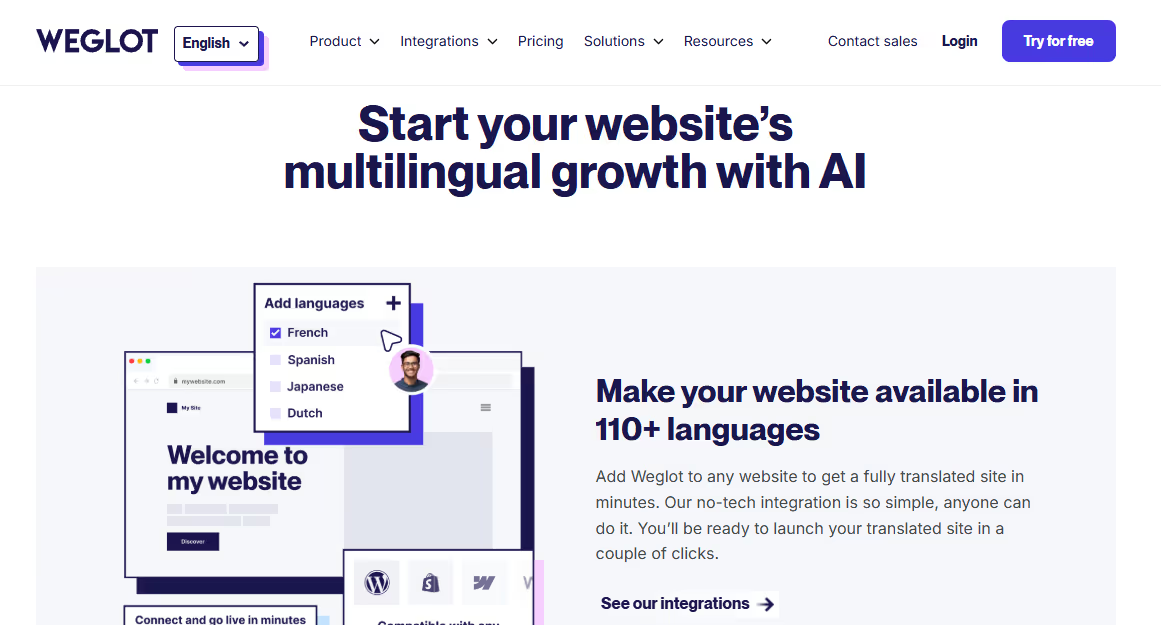
2. Napta: Scaling With Automation
French SaaS company Napta chose Weglot to localize its Webflow site while keeping the translation process lean. By integrating Weglot, the team eliminated manual translation workflows and benefited from automatic content updates across languages. Their switcher is placed in the navigation bar using language codes—a clean and accessible UX choice.
“Having a multilingual website and being able to manage it without any technical capabilities, coupled with the time-saving process of manually optimizing things that are already translated has been a game changer for our multilingual SEO performance.” — Estelle Barthes, Communications at Napta
Source: Napta + Weglot Case Study
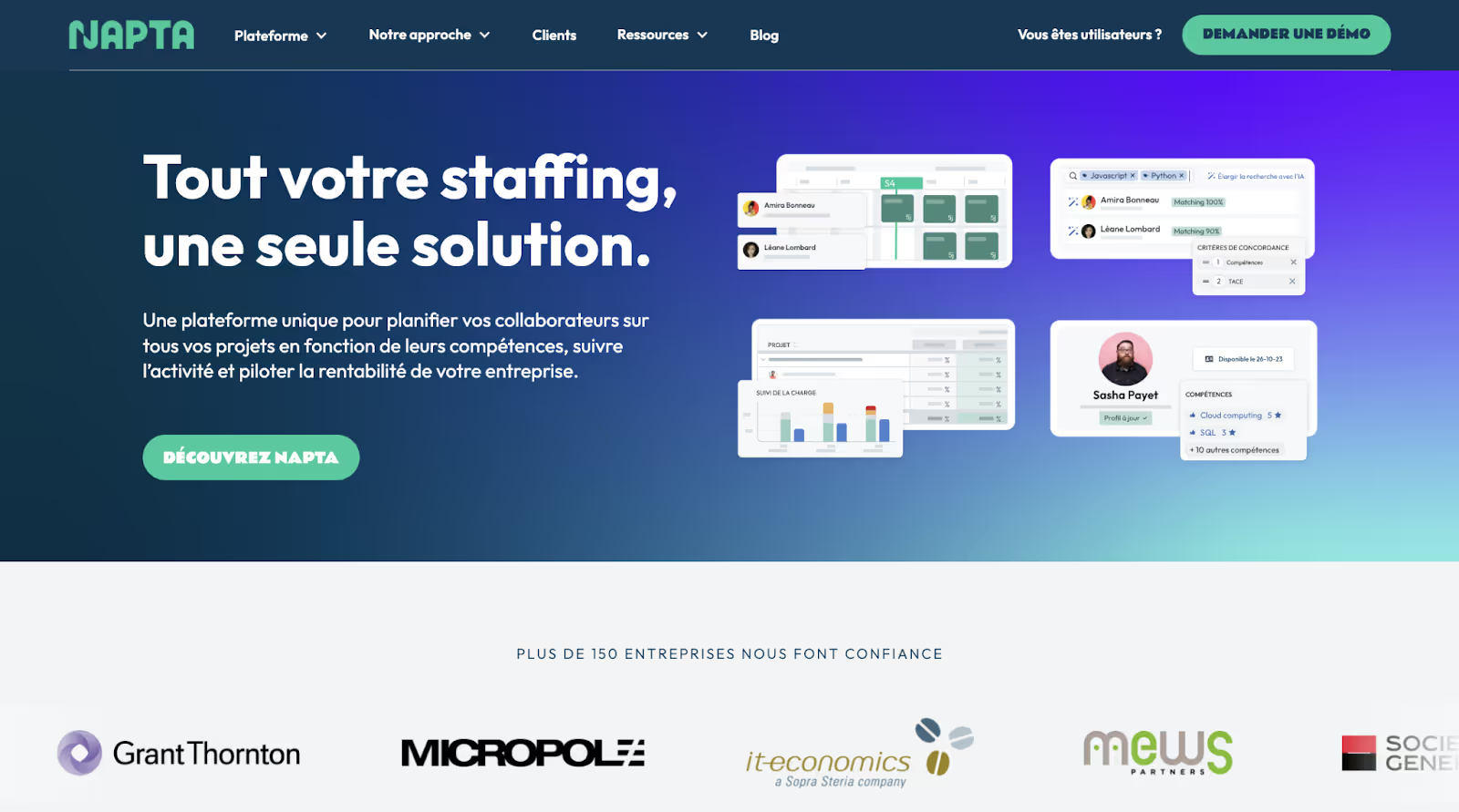
3. i-Mesh: Seamless Visual Integration
Textile design company i-Mesh used Webflow and Weglot to go multilingual, placing its custom-designed language switcher in a sticky sidebar. Rather than displaying full language names, they opted for a stylized partial text format that complements their minimalist aesthetic. This subtle integration supports the user journey without compromising on design.
4. Dropcontact: Navigation-First Approach
Dropcontact, an automation platform, has implemented a multilingual Webflow site with a language switcher embedded directly into the main navigation bar. This strategic placement enhances accessibility and reinforces the brand’s focus on usability. The clean design and responsive layout work seamlessly across all supported languages.
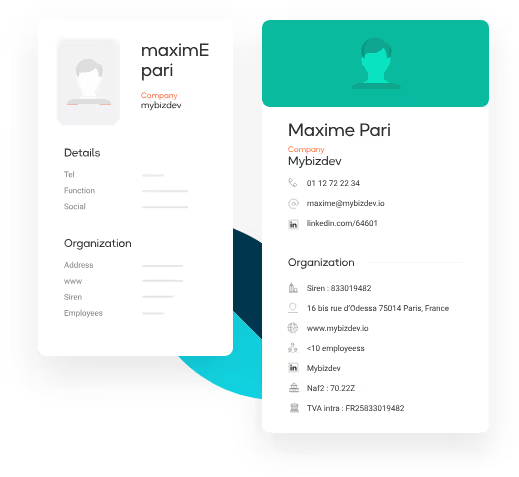
5. Bigblue: Balanced Simplicity and Functionality
Logistics platform Bigblue offers its multilingual content through a footer-based switcher that incorporates both flags and full language names. While flags can be controversial, in this case, their use reflects the specific regions Bigblue targets and complements their global logistics branding.
Source: Bigblue on Weglot Showcase
6. Armor Wallet: Leveraging Templates for Global UX
Armor Wallet, an AI-powered Web3 security product, opted for simplicity in its approach. They cloned a Finsweet x Weglot switcher design directly into their Webflow project, supporting multiple Asian languages. This shows how leveraging pre-built UI kits can save time while still delivering a polished, scalable solution.
Source: Armor Wallet on Weglot Showcase
These examples illustrate that with the right tools—particularly Webflow and Weglot—localization doesn’t need to be an operational burden. Instead, it can become a strength that enhances brand reach, performance, and user experience across markets.
Managing a multi-language Webflow site requires more than just translation plugins. To streamline workflows, maintain accuracy, and scale your localization efforts, you’ll need a toolkit that covers translation management, content delivery, and SEO optimization. Here are the core categories of tools—along with popular options—for building and sustaining a successful multilingual web presence.
Translation Management Systems (TMS)
A TMS centralizes translation workflows, tracks revisions, and supports collaboration between developers, translators, and marketing teams. These platforms are especially useful for large-scale or enterprise sites that need tight control over language accuracy and brand consistency.
Popular TMS tools include:
CMS Plugins and Extensions
For content-heavy platforms like WordPress or Webflow, localization plugins simplify the translation and publishing process. While Webflow has native localization, external plugins provide more flexibility and automation.
Top options include:
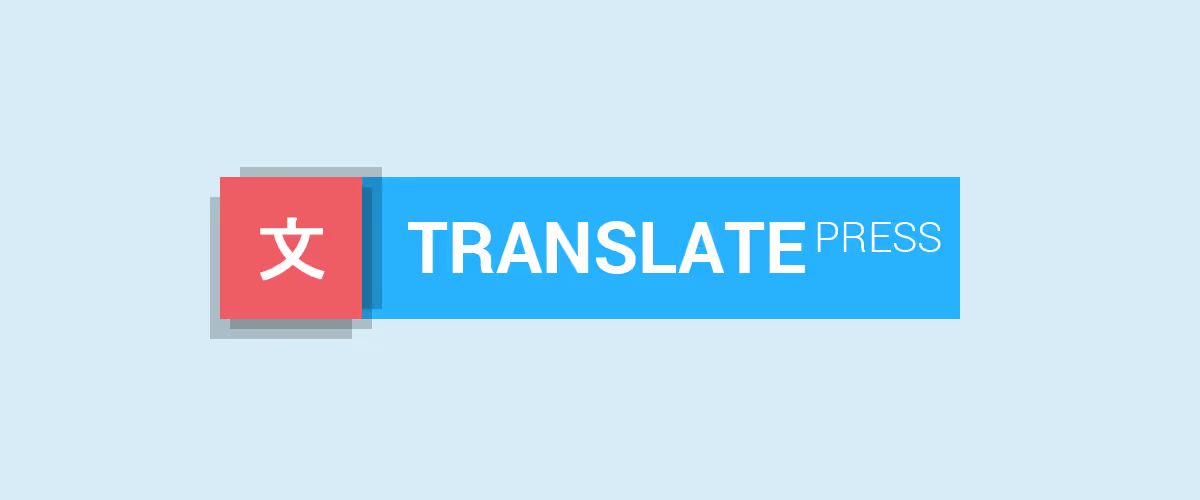
Browser Detection and Language Switching Tools
A smooth language-switching experience depends on giving users control, while also offering convenience through browser detection or IP-based redirects.
Useful features to look for:
SEO & Hreflang Management Tools
Ensuring that your localized pages rank properly in global search engines requires careful SEO configuration. Tools that help manage hreflang tags, sitemaps, and keyword tracking across languages are essential.
Key tools include:
Accessibility and Performance Tools
Localized content should be accessible and fast, regardless of the user’s language or location. Use these tools to monitor quality and performance across all versions of your site:
Content Delivery Networks (CDNs)
Speed matters—especially in international markets. CDNs reduce latency by serving content from servers closest to the user.
Recommended options:
A successful multilingual website strategy is about more than translations—it’s about creating a robust digital infrastructure that can support your global ambitions. These tools will help you do just that, allowing you to focus on audience engagement, not technical limitations.
Designing a multi-language Webflow site is no longer a niche task—it’s a fundamental step for any business aiming to connect with a global audience. From planning your localization strategy and implementing hreflang tags to customizing UX for cultural relevance and choosing between Webflow Localization or Weglot, every decision you make affects the user experience and search visibility in each target market.
The good news is that building a high-performing multilingual site doesn’t have to be overwhelming. With the right strategy and tools in place, you can create a site that feels native to each visitor—regardless of their language or location—while maintaining consistency in design, performance, and brand messaging.
Whether you're just beginning your international expansion or looking to scale your existing localization efforts, it’s important to work with platforms and partners that understand the nuances of multilingual design and SEO. That’s where Ballistic comes in. As experts in building fast, scalable, and fully localized Webflow experiences, Ballistic helps businesses grow globally without sacrificing performance or user experience.
If you’re ready to take your multilingual web presence seriously, consider partnering with Ballistic to future-proof your digital infrastructure and maximize your reach.
1. How many languages can I support on a Webflow site?
There’s no hard limit to the number of languages you can support with Webflow or tools like Weglot. However, your choice of localization method will influence scalability. Weglot, for example, can handle 100+ languages efficiently, while Webflow's native localization is better suited for smaller-scale language expansions.
2. Does adding multiple languages slow down my site?
It can if not implemented properly. Tools like Weglot optimize content delivery using CDNs and asynchronous loading to minimize impact on performance. Still, it's essential to audit load speeds regularly, particularly for global users on slower connections.
3. Can I localize my CMS content on Webflow?
Yes. Webflow Localization allows you to manage CMS items per locale, though it requires manual setup for each version. Weglot automates translation for CMS content and allows you to fine-tune it through their dashboard for more efficiency.
4. What are the SEO risks of using automatic translation?
While automatic translation saves time, it can misrepresent your brand if left unchecked. For important pages, review and edit machine translations, or hire native speakers. Weglot allows manual overrides and glossary tools to refine tone and accuracy while maintaining SEO with built-in hreflang tagging and localized metadata.
5. Should I use flags in my language switcher?
In most cases, it's better to use language names written in their native script. Flags can be misleading—many languages are spoken in multiple countries. Unless your audience strongly associates a flag with your content or country, stick to native names or codes for clarity.
6. Why choose Ballistic for my multilingual Webflow site?
Ballistic specializes in building high-performance, SEO-friendly Webflow sites that scale across markets. If you’re expanding globally and want a seamless blend of design, localization, and speed, Ballistic can handle everything from technical setup to strategic optimization. They’ve helped numerous brands deploy multilingual strategies that not only look great but perform at an international level.
Learn more about Ballistic’s Webflow localization solutions here.

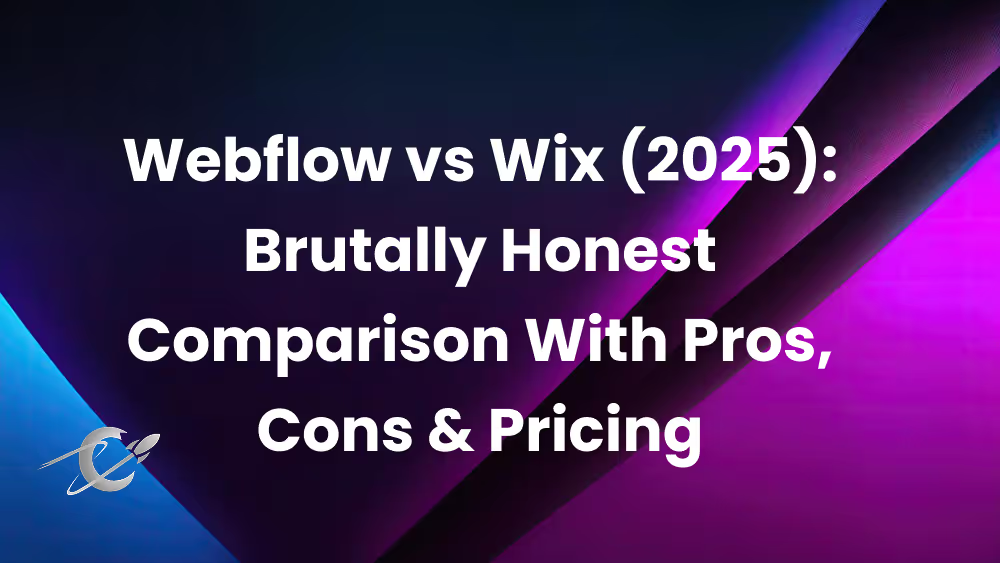
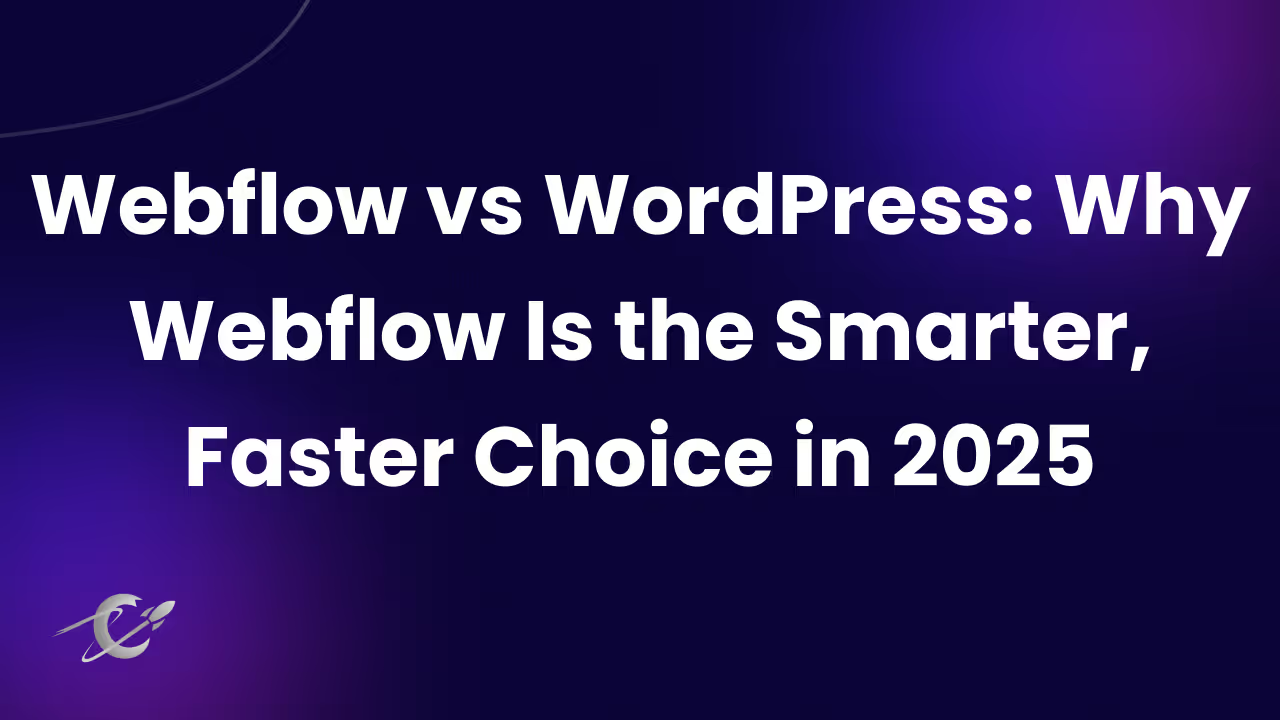

Wait, don't go! 100% Free - Unlimited Webflow Development for 7 days.
Only valid for-